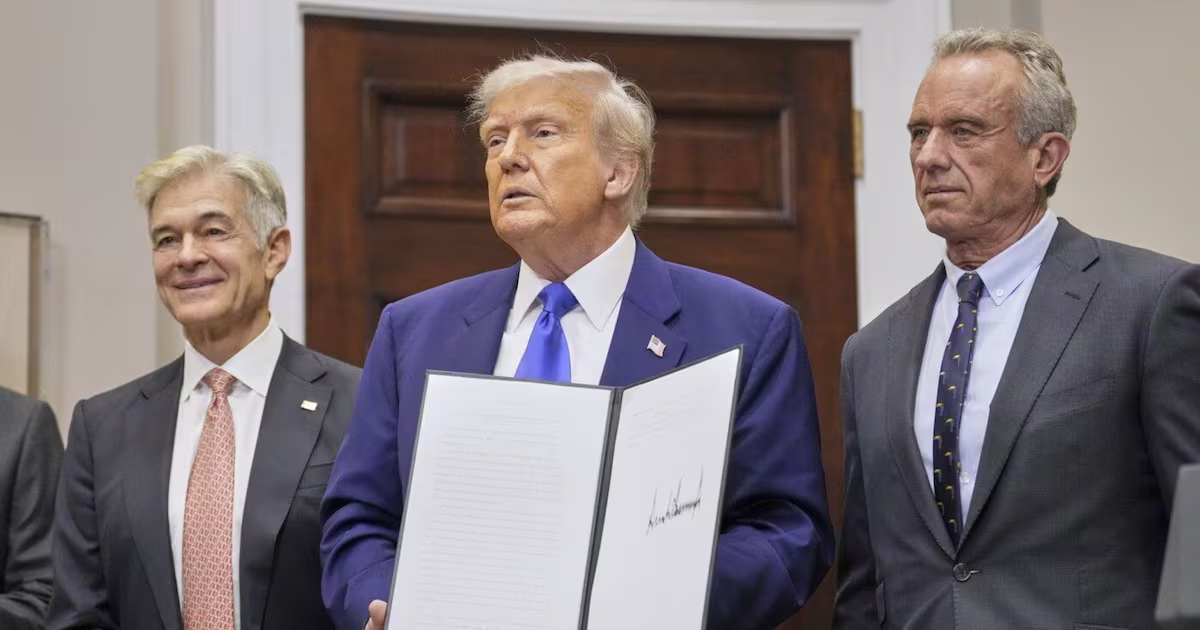In a move that has stirred widespread debate, U.S. President Donald Trump unveiled a new drug pricing plan aimed at lowering prescription medication costs for American consumers. The announcement comes amid growing concerns over rising healthcare expenses and increasing public demand for more affordable medications. However, the plan has also sparked controversy, with critics questioning its effectiveness and potential impact on the pharmaceutical industry.
Overview of the New Drug Pricing Plan
The Trump administration’s new strategy focuses on increasing competition in the pharmaceutical market and promoting transparency in drug pricing. Central to the plan is the proposal to allow Medicare to negotiate directly with drug manufacturers, a significant shift from existing policies that prohibit such negotiations.
Additionally, the plan seeks to implement international pricing benchmarks by tying U.S. drug prices to those in countries where medication costs are substantially lower. This “most-favored-nation” approach aims to prevent pharmaceutical companies from charging exorbitant prices in the United States compared to other markets.
The administration also intends to curb “pay-for-delay” agreements, where brand-name drug manufacturers pay generic drug makers to postpone the release of cheaper alternatives. By limiting these practices, the plan aims to speed up the introduction of more affordable generic medications.
Reactions from Stakeholders
The announcement has drawn mixed reactions from various stakeholders. Consumer advocacy groups and healthcare organizations have broadly praised the initiative, highlighting the critical importance of tackling drug affordability. They argue that enabling Medicare to negotiate prices could lead to significant savings for millions of Americans reliant on prescription medications.
On the other hand, pharmaceutical companies and industry representatives have voiced strong opposition. They warn that price controls and international benchmarking could stifle innovation and reduce investments in research and development. According to the industry, such measures might ultimately limit the introduction of new, life-saving drugs.
Some lawmakers have also expressed skepticism about the plan’s feasibility and legal challenges it may face, particularly regarding Medicare negotiations. Critics highlight the complexity of implementing international price comparisons and the potential unintended consequences for patients.
Impact on Patients and Healthcare Costs
If implemented, the drug pricing plan could have far-reaching implications for patients across the country. Lower prescription drug costs would alleviate financial burdens, particularly for seniors and individuals with chronic illnesses who often face high out-of-pocket expenses.
Experts estimate that allowing Medicare to negotiate prices could save billions of dollars annually, helping to reduce overall healthcare spending. These savings could then be redirected to improve access to care and fund other essential health programs.
However, some healthcare professionals caution that price reductions must be balanced with maintaining the quality and availability of medications. They stress the importance of ensuring that cost-cutting measures do not compromise patient outcomes or limit treatment options.
Political and Economic Considerations
The drug pricing plan has become a key topic in the broader healthcare debate, influencing political campaigns and policy discussions. President Trump’s administration has positioned the initiative as a major accomplishment in its efforts to reform healthcare and reduce costs.
The controversy surrounding the plan reflects deeper tensions between the goals of affordability, innovation, and market dynamics. Balancing these competing interests remains a significant challenge for policymakers, industry leaders, and patient advocates.
Economic analysts note that while short-term savings are possible, long-term effects on drug development and market competition are uncertain. Ongoing monitoring and adjustments will be crucial to ensuring the plan achieves its intended outcomes.
Looking Ahead
As the new drug pricing plan moves toward implementation, stakeholders await detailed guidelines and regulatory measures. The success of the initiative will depend on collaboration between government agencies, pharmaceutical companies, and healthcare providers.
Public opinion will also play a vital role in shaping future policies. Transparent communication about the plan’s benefits and potential risks will be essential to building trust and support among Americans.
Conclusion
President Trump’s announcement of a new drug pricing plan marks a significant step in addressing the pressing issue of high medication costs in the United States. While the proposal promises increased competition and greater affordability, it also faces substantial controversy and challenges.
The coming months will be critical in determining how this plan unfolds and its impact on patients, the pharmaceutical industry, and the healthcare system as a whole. As the debate continues, one thing remains clear: affordable access to essential medicines is a priority that demands ongoing attention and innovation.





